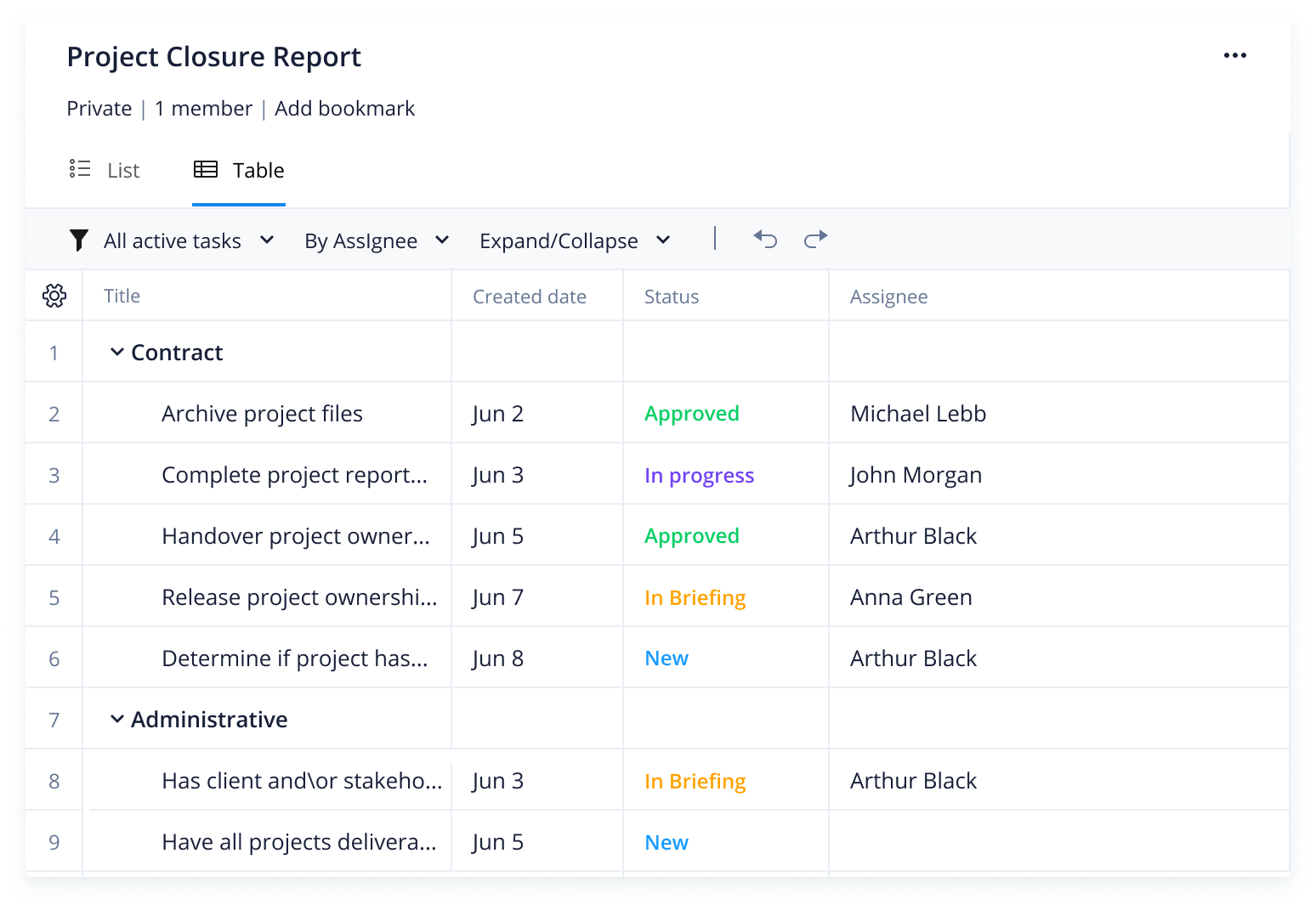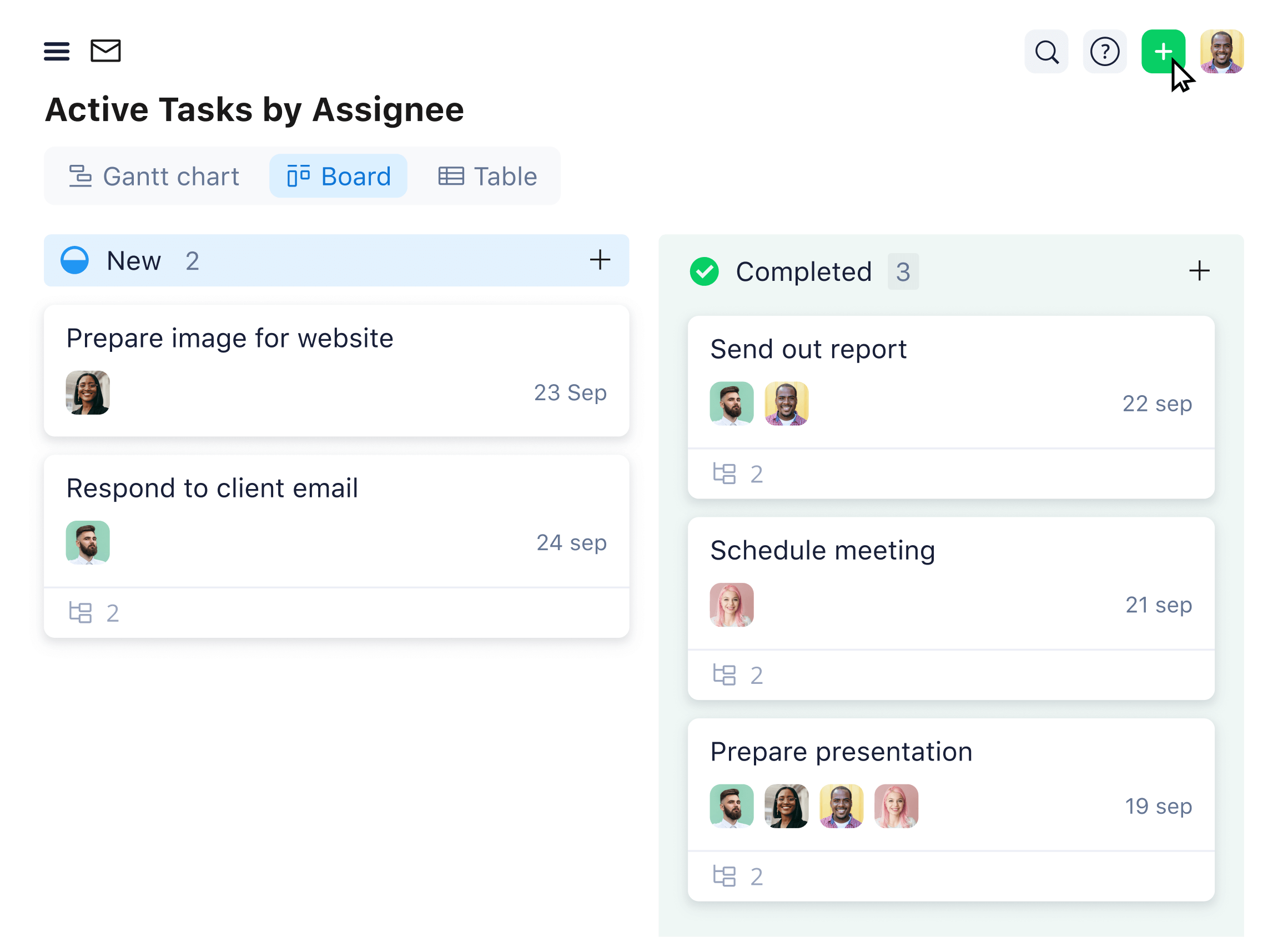What are the project management basics?
The ability to deliver projects on schedule, on budget, and aligned with business goals is key to gaining an edge in today’s highly competitive global business environment. This is why it is important for the person in charge of the project to have a comprehensive understanding of project management, from basic concepts to extensive experience.
Project managers have an incredibly complex assignment, one that blends organizational skills, analytical minds, and adept interpersonal abilities.
Many PMs are assisted by project management software and tools that help projects throughout the project life cycle. Wrike can help your business manage goals and objectives, set up Gantt charts and Kanban boards, and much more throughout the project life cycle. Try Wrike today to see how PMs deliver successful projects.
In this section, we’ll walk you through the basics of project management and what it means to be a project manager.
And, if you are looking for a solution to kick-start your project management journey, you can unlock a free trial with Wrike now.
What is a project?
Before we get into the basics, we need to define what exactly a “project” is. Sure, you’ve probably been assigned countless “projects” in school or on the job, but what is the actual definition?
The Project Management Institute (PMI) defines a “project” as “a temporary endeavor undertaken to create a unique product, service or result.”
There are a few key things to notice in this definition:
- The word “temporary” means projects must have a defined beginning and end. This means every project must include a timeline, scope, and resources. The fact that it is temporary with a beginning and an end also means that it is not part of ongoing operations. This brings us to the second point.
- The purpose of a project must be “to create a unique product, service, or result.” This means a project will be started in order to accomplish a specific goal that is typically outside the realm of the typical day-to-day business operation. This means the project team might include people who don’t usually work together, and require resources that are typically outside the scope of day-to-day operations.
Every project must have the following components:
- Goal: What are you trying to achieve?
- Timeline: When are you trying to achieve it?
- Budget: How much will it cost to achieve?
- Stakeholders: Who are the major players who have an interest in this project?
- Project manager: Who is going to make sure everything that needs to be completed gets completed?
A project is not something routine. Day-to-day operations and maintenance are not considered projects because they do not have a definitive start and end.
What is project management?
Project management is the practice of applying knowledge, skills, tools, and techniques to complete a project according to specific requirements.
Proper execution of this practice comes down to identifying the problem, creating a plan to solve the problem, and then executing that plan until the problem has been solved. That may sound simple, but there is a lot that goes into it at every stage of the process. With the proper management plan, the project will be completed on time and within budget.
The roots of project management can be traced as far back as the building of the Pyramids in Giza and the Great Wall of China. However, the modern development of this practice began in the 19th century when railway companies purchased tons of raw materials and employed thousands of people to work on the transcontinental railroad.
By the early 20th century, Frederick Taylor applied PM concepts to the workday, developing strategies for working smarter and improving inefficiencies, rather than demanding laborers work harder and longer. Henry Gantt, an associate of Taylor’s, took those concepts and used bars and charts to graph when certain tasks, or a series of tasks, were completed, creating a new way to visualize project management.
During World War II, military and industrial leaders were employing even more detailed management strategies, eventually leading to more standardized processes like the critical path method.
These practices grew in popularity across industries and, in 1965 and 1969, the International Project Management Association and PMI were founded, respectively. In 2001, Agile project management methodologies were codified by the creation of the Agile Manifesto.
The field of project management continues to shift as an increasingly competitive landscape, the need to deliver change fast, and new technologies (automation, AI, etc.) enter the marketplace.
Streamline your projects in one platform
What are the stages of project management?
The five project management process groups are:
- Initiating: The goal for this phase is to define the project.
- Planning: This phase includes developing a roadmap for everyone to follow.
- Executing and Monitoring: In this stage, the project team is built and deliverables are created. PMs will monitor and measure project performance to ensure it stays on track.
- Closing: The project is completed, a post-mortem is held, and the project is transferred to another team who will maintain it.


Why is project management important?
Project managers will help your organization:
- Have a more predictable project planning and execution process
- Adhere to project budgets, schedules, and scope guidelines
- Resolve project roadblocks and escalate issues quicker and easier
- Identify and terminate projects that do not have relevant business value
- Become more efficient
- Improve collaboration across and within teams
- Identify and plan for risks
What do project managers do?
In short, project managers are responsible for the planning, executing, monitoring, controlling, and completion of projects, so they must have a complete understanding of the subject matter. However, that is just the tip of the project management basics iceberg. Here are a few of the main responsibilities:
- Build the plan: Project managers are in charge of plotting out the most realistic course for the project. The plan must include the project scope, timeline, and budget. This can also include identifying the right tools for the job.
- Assemble the team: Identifying the proper team is critical. Every project team will vary depending on the scope of the initiative and the functions needed to complete the project. Finding specialists and subject matter experts for each of the necessary tasks is ideal.
- Assign tasks: Project managers must provide their team with a clear definition of specific tasks and timelines for every part of the project. Although each team member will be responsible for their own assignments, many tasks will require collaboration from both internal and external team members.


- Lead the team: Now that the team has been assembled and their tasks have been assigned, the project manager must keep the machine well-oiled, covering the basics and beyond. This will include checking in on individuals for status updates, identifying and clearing roadblocks, negotiating disagreements, keeping team morale high, and providing training and mentoring.
- Manage the budget: Most projects will require some expenses, which means understanding how to put together a project budget and manage cost is critical for success. This will involve comparing real-life expenditures to estimates, and adjusting the project plan if necessary.
- Manage timelines: As with the budget, project managers are tasked with keeping everything on schedule so the team is meeting their projected deadlines for completion. This will require setting realistic deadlines throughout the life cycle of the project, communicating consistently with the team for status updates, and maintaining a detailed schedule.
- Engage stakeholders: Stakeholders play a large role in your project. They are typically influential people who are affected by the project. Project managers need to maintain a good relationship and an open line of communication with stakeholders who can not only help clear roadblocks and empower your team but also create unnecessary bottlenecks and derail a project if they become unhappy with the direction.
- Hand over the project: Just because the project’s objectives have been delivered doesn’t mean a project manager’s job is over. The project manager must now deliver the project to the team who will be managing, maintaining, and operating it moving forward. At this point, the project manager will no longer be the go-to person and will be assigned to a new project.
- Document the process: Identifying and documenting “lessons learned” is not only a good practice for personal growth, but also for relaying that experience to other teams around the organization for future use. This will help others avoid making the same mistakes, or taking advantage of the shortcuts discovered.
Project manager certifications
Although getting a general project management certification is not necessary, some employers may prefer or offer more pay to certified project managers. The Project Management Professional (PMP) is the most popular certification and is run by the PMI, but it’s not the only certification available. Here are just a few of the other options:
- Associate in Project Management
- Certified Associate in Project Management (CAPM)
- Certified Project Director (CPD)
- Certified Project Manager (IAPM)
- Certified ScrumMaster (CSM)
- CompTIA Project+ Certification
- PRINCE2 Foundation/PRINCE2 Practitioner
- Professional in Project Management (PPM)
- Master Project Manager (MPM)
Streamline your projects with Wrike
With Wrike, you can easily streamline your projects in one platform and work more efficiently. Thanks to our customizable workflows and real-time collaboration, Wrike ensures that workloads are balanced and progress is tracked accurately. We also offer Gantt charts and Kanban boards to help you monitor project milestones and ensure on-time delivery.
Whether for a small team or a large enterprise, Wrike can help you achieve your project management goals and improve your overall productivity.
Next Steps
Check out free resources
Head over to our resource section for more content on collaboration and working with confidence. Read more here.
Now that you have a good understanding of the basics, it’s time to learn about project management methodologies. Each methodology has its purpose and, depending on the type of project, you’ll want to choose the right methodology or framework to make it happen.
The next section outlines each methodology in depth.


